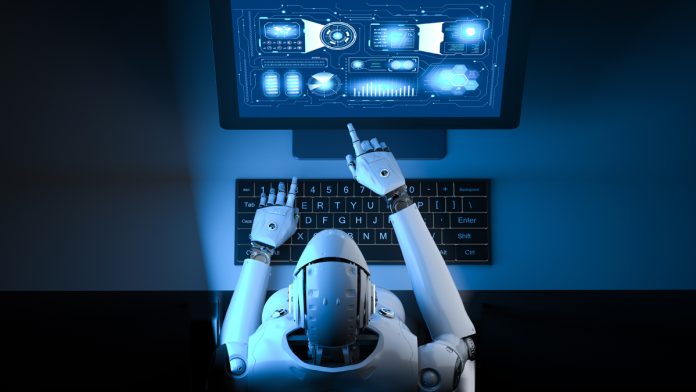In the rapidly evolving world of filmmaking, technological advances are reshaping every aspect of the creative process. The integration of intelligent systems into film editing and post-production has ushered in a new era defined by precision, efficiency, and creativity. Studios now harness innovative solutions, from automated scene detection to data-driven decision making, to streamline workflows and elevate storytelling. At the forefront of this revolution is the transformative approach known as AI-Powered Film Editing and Post-Production, which marries human ingenuity with cutting-edge machine intelligence.
| Table of Contents | |
|---|---|
| I. | Automated Scene Detection and Shot Classification |
| II. | AI-Driven Color Grading and Correction |
| III. | Intelligent Footage Management and Metadata Tagging |
| IV. | AI-Assisted Narrative Construction and Editing |
| V. | Machine Learning for Visual Effects (VFX) Enhancement |
| VI. | AI in Audio Post-Production |
| VII. | Real-Time Rendering and Virtual Production Integration |
| VIII. | Collaborative Human-AI Workflows in Film Editing |
| IX. | Data-Driven Decision Making in Post-Production |
| X. | Ethical, Legal, and Creative Implications of AI in Film Production |
Automated Scene Detection and Shot Classification
One of the most significant breakthroughs in modern film editing is the ability to automatically detect scenes and classify shots with remarkable accuracy. Advanced AI algorithms analyze visual patterns, lighting, and motion to segment raw footage into meaningful sequences. This automated process not only saves countless hours but also enhances creative control by providing intuitive shot selections. As a vital component of AI-Powered Film Editing and Post-Production, these systems empower editors to efficiently sift through extensive libraries of footage, ensuring every crucial moment is captured with precision.
AI-Driven Color Grading and Correction
Color grading has long been an art form that sets the tone and mood of a film. Today, AI-driven color grading and correction tools can adjust hues, saturation, and brightness with surgical precision. By learning from historical data and stylistic trends, these intelligent applications recommend or automatically apply color settings that enhance visual storytelling. This sophisticated technique not only ensures consistent aesthetics across scenes but also dramatically reduces time spent on manual adjustments. Leveraging AI-Powered Film Editing and Post-Production methods, filmmakers achieve vibrant, dynamic visuals that resonate with audiences.
Intelligent Footage Management and Metadata Tagging
Managing vast amounts of footage is a formidable challenge in film production. Intelligent footage management systems now use AI to automatically categorize scenes, tag characters, and annotate dialogue, thereby simplifying the search for specific clips. This organized approach allows editors to devote more energy to creative storytelling instead of laboriously combing through disorganized files. By integrating AI-Powered Film Editing and Post-Production into metadata tagging processes, production teams enjoy a streamlined workflow that brings order to the chaos of raw footage.
AI-Assisted Narrative Construction and Editing
Crafting a compelling narrative is central to the art of filmmaking. AI-assisted narrative construction tools analyze story arcs, pacing, and character development to provide data-driven suggestions on scene sequencing and timing. These systems empower editors to experiment with different narrative structures, ultimately enhancing the emotional impact of the film. The integration of AI-Powered Film Editing and Post-Production methods in narrative construction enables a dynamic editing process where creative decisions are informed by analytical insights, striking a perfect balance between intuition and innovation.
Machine Learning for Visual Effects (VFX) Enhancement
Visual effects are essential for creating immersive cinematic experiences, and machine learning is redefining the VFX landscape. AI algorithms can refine CGI elements, remove unwanted noise, and simulate natural phenomena with extraordinary realism. By learning from vast datasets of visual content, these tools provide precise enhancements that previously required labor-intensive manual work. This evolution in visual effects is a prime example of how AI-Powered Film Editing and Post-Production is reshaping creative processes, enabling filmmakers to achieve stunning visuals with improved efficiency and creative freedom.
AI in Audio Post-Production
Sound design is as crucial as visuals in film, and AI is making significant strides in audio post-production. Intelligent audio tools now isolate dialogue, balance soundtracks, and remove background noise with impressive accuracy. These systems adapt to diverse acoustic environments, ensuring that every auditory element aligns perfectly with the director’s vision. By incorporating AI-Powered Film Editing and Post-Production techniques into audio workflows, editors can craft a harmonious blend of sound and imagery that heightens the overall storytelling experience, all while reducing the need for extensive manual editing.
Real-Time Rendering and Virtual Production Integration
Virtual production is transforming how filmmakers visualize and create scenes, with real-time rendering leading the charge. Powered by advanced AI algorithms, real-time rendering processes complex visual data instantaneously, allowing directors to witness changes as they occur. This seamless integration with virtual production sets enables the simultaneous blending of live-action and digital effects. The use of AI-Powered Film Editing and Post-Production in real-time rendering not only accelerates production timelines but also opens new creative avenues for experimentation and innovation on set.
Collaborative Human-AI Workflows in Film Editing
While AI introduces numerous technical enhancements, its true potential is unlocked when it collaborates with human creativity. Collaborative human-AI workflows combine analytical precision with the nuanced artistry of seasoned editors. In this symbiotic relationship, AI handles repetitive tasks and offers insightful recommendations, freeing creative professionals to focus on storytelling and artistic vision. Embracing AI-Powered Film Editing and Post-Production paves the way for a future where technology and human expertise work in harmony, ensuring that creative expression is both innovative and deeply personal.
Data-Driven Decision Making in Post-Production
In today’s digital era, data is an invaluable asset, even in the realm of creative arts. Data-driven decision making in post-production involves harnessing analytics to determine effective editing techniques, monitor audience engagement, and refine narrative strategies. By leveraging big data, filmmakers can optimize their processes and anticipate trends with unprecedented accuracy. This analytical approach is a cornerstone of AI-Powered Film Editing and Post-Production, ensuring that every creative decision is supported by empirical evidence, which in turn enhances both the artistic and commercial success of the film.
Ethical, Legal, and Creative Implications of AI in Film Production
As AI continues to revolutionize film production, it also raises complex ethical, legal, and creative challenges. Questions surrounding authorship, intellectual property, and the role of human creativity arise as automated systems become more integral to the process. The industry must carefully navigate these challenges by establishing clear guidelines and fostering open dialogue about the future of art in the digital age. Balancing innovation with responsibility is crucial in AI-Powered Film Editing and Post-Production, ensuring that technological advancements complement rather than compromise the creative spirit of filmmaking.

